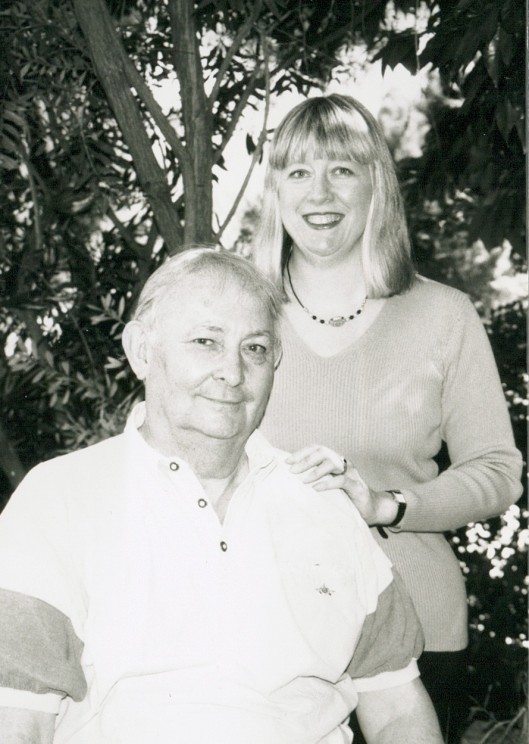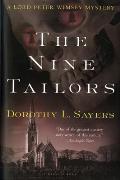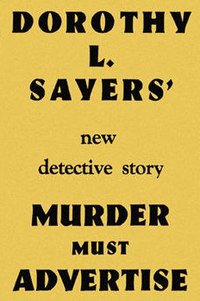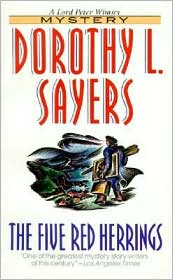new posts in all blogs
Viewing: Blog Posts Tagged with: dorothy sayers, Most Recent at Top [Help]
Results 1 - 6 of 6
How to use this Page
You are viewing the most recent posts tagged with the words: dorothy sayers in the JacketFlap blog reader. What is a tag? Think of a tag as a keyword or category label. Tags can both help you find posts on JacketFlap.com as well as provide an easy way for you to "remember" and classify posts for later recall. Try adding a tag yourself by clicking "Add a tag" below a post's header. Scroll down through the list of Recent Posts in the left column and click on a post title that sounds interesting. You can view all posts from a specific blog by clicking the Blog name in the right column, or you can click a 'More Posts from this Blog' link in any individual post.

By:
Becky Laney,
on 2/6/2013
Blog:
Becky's Book Reviews
(
Login to Add to MyJacketFlap)
JacketFlap tags:
classics,
adult fiction,
mystery,
1926,
Dorothy Sayers,
book I bought,
adult mystery,
Lord Peter Wimsey,
books reviewed in 2013,
Add a tag
Clouds of Witness. Dorothy L. Sayers. 1926/1966. Avon. 224 pages.
Lord Peter Wimsey stretched himself luxuriously between the sheets provided by the Hotel Meurice. After his exertions in the unraveling of the Battersea Mystery, he had followed Sir Julian Freke's advice and taken a holiday.I hope to reread all of Dorothy Sayers' Lord Peter books this year. This is my first reread of the series. My first review of
Clouds of Witness.
While Clouds of Witness is not my absolute favorite in the Lord Peter Wimsey series, I definitely enjoyed it. Lord Peter is still Lord Peter. I still enjoy seeing Lord Peter in discussion with Bunter and Parker. I still love references to Lord Peter's mother!
In this mystery, Lord Peter rushes home because his brother has been arrested for murder. The victim was engaged to be married to his sister, Mary. But with his brother staying silent about WHERE he was and WHO he was with at the time of the crime, and Mary being caught in a handful of lies, Peter is having difficulty establishing just who the real murderer was.
Lord Peter to Inspector Charles Parker:
"True, O King. Well, you've sat on all my discoveries so far. Never mind. My head is bloody but unbowed. Cathcart was sitting here--"
"So your brother said."
"Curse you, I say he was; at least, somebody was; he's left the impression of his sit-me-down-upon on the cushion."
'That might have been earlier in the day."
"Rot. They were out all day. You needn't overdo this Sadducee attitude, Charles. I say Cathcart was sitting here..." (38)
Lord Peter to Inspector Charles Parker:
"I say, I don't think the human frame is very thoughtfully constructed for this sleuth-hound business. If one could go on all-fours, or had eyes in one's knees, it would be a lot more practical." (48)
Lord Peter to Inspector Charles Parker:
"Did you ever read The Lay of the Last Minstrel?"
"I learnt a good deal of it at school," said Parker. "Why?"
"Because there was a goblin page-boy in it," said Lord Peter, "who was always yelling 'Found! Found! Found!' at the most unnecessary moments. I always thought him a terrible nuisance, but now I know how he felt. See here." (52)
Sir Impey Biggs to the Dowager Duchess:
"Lawyers enjoy a little mystery, you know. Why, if everybody came forward and told the truth, the whole truth, and nothing but the truth straight out, we should all retire to the workhouse." (62)
A solemn Peter...
With that instinct which prompts one, when depressed, to wallow in every circumstance of gloom, Peter leaned sadly upon the hurdles and abandoned himself to a variety of shallow considerations upon (1) The vanity of human wishes; (2) Mutability; (3) First love; (4) The decay of idealism; (5) The aftermath of the Great war; (6) Birth-control; (7) The fallacy of free-will. (71)
Lord Peter to Inspector Charles Parker:
"Mother said--well, I told you what she said. By the way, how do you spell ipecacuanhna?"
Mr. Parker spelt it.
"Damn you!" said Lord Peter. "I did think I'd stumped you that time. I believe you went and looked it up beforehand. No decent-minded person would know how to spell ipecacuanha out of his own head. Anyway, as you were saying, it's easy to see which side of the family has the detective instinct."
"I didn't say so--"
"I know. Why didn't you? I think my mother's talents deserve a little acknowledgment. I said so to her, as a matter of fact, and she replied in these memorable words: 'My dear child, you can give it a long name if you like, but I'm an old-fashioned woman, and I call it mother-wit, and it's so rare for a man to have it that if he does you write a book about him and call him Sherlock Holmes.'" (97)
Read Clouds of Witness
- If you enjoy mysteries--cozy mysteries, vintage mysteries, British mysteries
- If you enjoy Dorothy Sayers' mysteries
- If you can't get enough of Lord Peter!
© 2013 Becky Laney of
Becky's Book Reviews
The Nine Tailors. Dorothy L. Sayers. 1934. 312 pages.
"That's torn it!" said Lord Peter Wimsey.
While I enjoyed The Nine Tailors--in some places really loved it--I can't say that The Nine Tailors is
my favorite Lord Peter mystery by Dorothy L. Sayers. I do love the series. I have enjoyed the time I've spent in each and every book. And I definitely see myself rereading these in the future. But. This one, for me, had such a slow start!
Last year
before I "discovered" how much I love mysteries--vintage mysteries, cozy mysteries--I tried The Nine Tailors. But the slow start didn't quite work for me. I decided I should start at the beginning of the series. Which ended up being THE BEST decision I could have made.
So Lord Peter Wimsey (and Bunter) have a small car accident over winter holidays that leaves them stranded in the country. They're taken in by the vicar, I believe, who is just delighted with the company. (Who wouldn't be?! It's LORD PETER WIMSEY!) His accident is providential because he can ring one of the bells in the church tower for an oh-so-special service or observation. (All the bell-ringing, well, it BORED me. That could be just me. And I am not saying you'll be bored by the focus of this one.) Of course, that's just the beginning of this one.
It will be months before the real action begins, months before Lord Peter Wimsey's real services are needed. For it is in this quiet country community that a body is discovered in a grave. An extra body is discovered in a grave that is. Who was he?
There are actually a few mysteries for Lord Peter to solve in this novel, and once the body is discovered, well, this book just keeps getting better and better and better. When Lord Peter is busy on a case, well, he's irresistible.
So there is much to love in this one....after the first fifty pages. It is possible that this one will improve upon rereading. Because I am guessing that if you read it knowing how it all comes together, it may prove interesting...
Lord Peter to Bunter:
"I am always so delighted to find that there are things you cannot do." (15)
About the bells...
The art of change-ringing is peculiar to the English, and, like most English peculiarities, unintelligible to the rest of the world. (17)
Lord Peter to Hilary:
"If that's the way your mind works, you'll be a writer one day."
"Do you think so? How funny! That's what I want to be. But why?"
"Because you have the creative imagination, which works outwards, till finally you will be able to stand outside your own experience and see it as something you have made existing independently of yourself. You're lucky."
"Do you really think so?" Hiilary looked excited.
"Yes--but your luck will come more at the end of life than at the beginning, because the other sort of people won't understand the way your mind works. They will start by thinking you dreamy and romantic, and then they'll be surprised to discover that you are really hard and heartless. They'll be quite wrong both times--but they won't ever know it, and you won't know it at first, and it'll worry you."
"But that's just what the girls say at school. How did you know?...Though they're all idiots--mostly that is."
"Most people are," said Wimsey, gravely "but it isn't kind to tell them so. I expect you do tell them so. Have a heart; they can't help it." (106)
Lord Peter on Uncle Edward...
"Frightful blithering ass. Handy thing to be, sometimes. Easily cultivated. Five minutes' practice before the
Murder Must Advertise. Dorothy L. Sayers. 1933. Harper & Row. 323 pages.
"And by the way," said Mr. Hankin, arresting Miss Rossiter as she rose to go, "there is a new copy-writer coming in today."
I love and adore Lord Peter Wimsey. I do. Dorothy Sayers' mysteries had me at hello. In fact, after the first one, I knew I just HAD to read the entire series. So in this Lord Peter adventure, he is going undercover to solve a murder. He has been hired as a copy-writer for an advertising agency. The man he is replacing had a horrid accident on the stairs. Was it really an accident? Or did he have some enemies? Did those enemies come from within the agency? Or was he just hanging out with the wrong crowds after hours?
It took more than a few chapters for Lord Peter to reveal himself to readers. For the first third of the novel, readers just know him as the new employee. Yes, this new employee is asking questions here, there, and everywhere. And, of course, I was a little suspicious and a lot hopeful that he would turn out to be Lord Peter.
Did I like this one? Of course!!! It's Lord Peter! What's not to love? I'm not sure it's my favorite or best. But with the exception of one little chapter, I found it satisfying and just about perfect. Lord Peter can definitely make me giddy!
"Truth in advertising is like leaven, which a woman hid in three measures of meal. It proves a suitable quantity of gas, with which to blow out a mass of crude misrepresentation into a form that the public can swallow." (68)
Others in the series:
I still need to read:
- The Nine Tailors (1934)
- Busman's Honeymoon (1937)
- Complete Stories of Lord Peter (1972)
- Thrones, Dominations (Dorothy Sayers and Jill Paton Walsh) (1998)
- A Presumption of Death (Jill Paton Walsh) (2002)
- The Attenbury Emeralds (Jill Paton Walsh) (2010)
© 2011 Becky Laney of
Becky's Book Reviews
The Five Red Herrings. Dorothy L. Sayers. 1931. HarperCollins. 325 pages.
If one lives in Galloway, one either fishes or paints. "Either" is perhaps misleading, for most of the painters are fishers also in their spare time. To be neither of these things is considered odd and almost eccentric. The Five Red Herrings is the seventh mystery starring Lord Peter Wimsey. Lord Peter is a character that I just love and adore. He's just one of my favorite, favorite, favorite characters ever. So I was so happy to read another mystery in this series.
In The Five Red Herrings, Lord Peter Wimsey is on vacation in Scotland. Though he neither paints or fishes, he is accepted--for the most part--by the community. It's hard to not like him, after all! Early in the novel--though I'm not sure if it's early in his holiday--a murder is committed. The "victim" is someone EVERYONE hates; threats against this guy were so common that they were hardly worth taking seriously. I mean Campbell, the victim, was just impossible to get along with. But now that he's dead, it is up to the police (the constables and detectives, etc.) to solve the crime. And since Lord Peter just happens to be very, very good at detecting, he offers to help them out.
There are six suspects--all artists. Hugh Farren, Henry Strachan, Matthew Gowan, Jock Graham, Michael Waters, and Ferguson. All had motive, all had opportunity. All of them are lying, all of them are hiding things from the police. Since there are so many suspects, since they all appear equally capable of committing the crime, it's just a matter of discerning the truth. Which theory--which plausible theory--is the truth? Which is most likely? Which uses all the clues that have been left behind?
Five Red Herrings is set in Scotland. And, for me, it was a delightful mystery.
Lord Peter Wimsey:
I was born looking foolish and every day in every way I am getting foolisher and foolisher. (52)
One of these days I shall write a book in which two men are seen to walk down a cul-de-sac, and there is a shot and one man is found murdered and the other runs away with a gun in his hand, and after twenty chapters stinking with red herrings, it turns out that the man with the gun did it after all. (114)
The essence of detection is secrecy. It has no business to be spectacular. But you can watch me if you like. (218)
© 2011 Becky Laney of
Becky's Book Reviews
The Unpleasantness at the Bellona Club. Dorothy L. Sayers. 1928/1995. HarperCollins. 256 pages.
"What in the world, Wimsey, are you doing in this Morgue?" demanded Captain Fentiman, flinging aside the "Evening Banner" with the air of a man released from an irksome duty.
Lord Peter Wimsey's skills will be tested in The Unpleasantness at The Bellona Club. For a great deal of money depends on his preciseness, his thoroughness. General Fentiman, a ninety-year-old man, died at his club (and Peter's club). No one thought anything of it at all.
Until they learned that the General's sister, Lady Dormer, had also died that morning. Until they learned that there was some question as to inheritance.
If the General died first, then Ann Dorland would inherit most of Lady Dormer's money, Major Robert Fentiman and Captain George Fentiman would receive a
little money. If Lady Dormer died first, then the General would have inherited most of his sister's money. And with the General being dead too, well, that leaves his two sons quite a bit wealthier.
But who died first? The Lady's death was discovered first. But that doesn't necessarily mean she died first. For nobody is quite sure when the General died. No one suspected him of being dead. He was just sitting still in his chair holding a newspaper for hours and hours.
So Lord Peter Wimsey is asked to help 'solve' this mystery. And at first, it is just a matter of determining
when he died naturally. But some of the clues just don't make sense unless he died by unnatural causes.
Was it murder? Can Lord Peter Wimsey solve this case?
I love Lord Peter Wimsey. I do. I love him. And I enjoyed The Unpleasantness at The Bellona Club. I thought it was an interesting mystery.
Lord Peter Wimsey to Mr. Murbles:
"Acid man you are," said Wimsey. "No reverence, no simple faith or anything of that kind. Do lawyers ever go to heaven?"
"I have no information on that point," said Mr. Murbles dryly. (15)
Marjorie Phelps to Lord Peter:
"Peter Wimsey! You sit there, looking a perfectly well-bred imbecile, and then in the most underhand way you twist people into doing things they ought to blush for. No wonder you detect things. I will not do your worming for you!" (162)
"Moral certainty is not the same thing as proof." (205)
Other books in the series:
- Whose Body (1923)
- Clouds of Witness (1926)
- Unnatural Death (1927)
- The Unpleasantness at the Bellona Club (1928)
- Strong Poison (1931)
- Five Red Herrings (1931)
- Have His Carcase (1932)
- Murder Must Advertise (1933)
- The Nine Tailors (1934)
- Gaudy Night (1935)
- Busman's Honeymoon (1937)
- Complete Stories of Lord Peter (1972)
- Thrones, Dominations (Dorothy Sayers and Jill Paton Walsh) (1998)
- A Presumption of Death (Jill Paton Walsh) (2002)
- The Attenbury Emeralds (Jill Paton Walsh) (2010)
© 2011 Becky Laney of
Becky's Book Reviews

By: Lauren,
on 11/8/2010
Blog:
OUPblog
(
Login to Add to MyJacketFlap)
JacketFlap tags:
Literature,
mystery,
Featured,
tony,
detective fiction,
omnibus,
rosemary,
Navajo,
tony hillerman,
dorothy sayers,
hillerman,
front page teaser,
rosemary herbert,
omnibus of crime,
sayers’,
canonize,
dustbin,
confine,
Add a tag
By Rosemary Herbert
Canonize or confine to the dustbin of literary history? How do the editors decide?
Well may readers wonder how scholars decide which story/author to canonize and which to confine to the dustbin of literary history. This was an issue I dealt with in several books for Oxford University Press, including The Oxford Companion to Crime & Mystery Writing, for which I served as editor in chief, and the anthologies that I edited with the late Tony Hillerman, The Oxford Book of American Detective Stories and A New Omnibus of Crime. With the Companion, I had the privilege of drawing on the expertise of sixteen advisory editors. But final judgment on which stories to include in our two anthologies fell to just Tony and me. Fortunately, in Tony, I had a great resource and support in making decisions that we both took quite seriously, even while we indulged in some good laughs along the way.
Tony Hillerman is well known to readers as the author of numerous novels about Joe Leaphorn and Jim Chee, Navajo Tribal Policemen who solved crimes at the cultural crossroads of the American Southwest. He won numerous awards for his fiction. But while his skills as an editor are less recognized, they deserve to be celebrated, too. Take it from one who edited two anthologies with him: Tony Hillerman knew his genre. He also possessed a wonderful playfulness and sense of humor.
Both of the anthologies that Tony and I edited were designed to represent developments in the literary history of crime writing. In The Oxford Book of American Detective Stories, our goal was to illustrate the rise of detective fiction in the United States from earliest times to the close of the twentieth century. In our next book, A New Omnibus of Crime, our mission was to bring together stories representing seventy-five years of genre innovations that have occurred since Sayers published her landmark anthology, The Omnibus of Crime.
We knew it was a tall order to follow in Sayers’ footsteps, so we decided to tread carefully. We pulled together reams of short stories and, over a period of months, we pored over them earnestly in our own homes.
We were looking for stories that took steps forward from the fiction of Sayers’ day. We wanted to demonstrate how mystery writers over the last three quarters of a century allowed the love element — which had been largely shunned in Sayers’ time as a distraction from the mystery plot — to enter and enrich their stories. We sought to showcase the growth of the regional crime story by selecting some distinctly regional writings. We decided to show how some contemporary crime writers dare to leave the stain of crime on the scene instead of tidying up as thoroughly as did Sayers’ contemporaries. And of course we wanted to make sure a variety of sleuths and crime types would be found in A New Omnibus of Crime. We found stories that feature private eyes and policeman, nosey neighbors and accidental sleuths, murder in the mean streets and plots cooked up over Christmas pudding. We were just as ready to be original in our choices as we were to carefully consider stories that already stood tall in the landscape of crime and mystery writing.
Finally, we got together in Tony’s home just outside of Al









Here iѕ my ωeblog :: payday loans
Here is my web blog - payday loans
This Rakhi a pleasant surprise is waiting for my brother. Thanks to www.rakhitoindia2013.com
for their lovely gift collection. It has simplified my task to a great extent.
Now the means of happiness comes in a single canvas. Make warm wishes to your beloved on this Valentine Days by sending these arrangements of Flowers in heart shape and a cute teddy that will sure speak out your expression of your heart and minds. Just get in touch with our online site www.indiafloristnetwork.com/valentines%20day.asp to Send Valentine’s Day Gifts and Flowers to India.